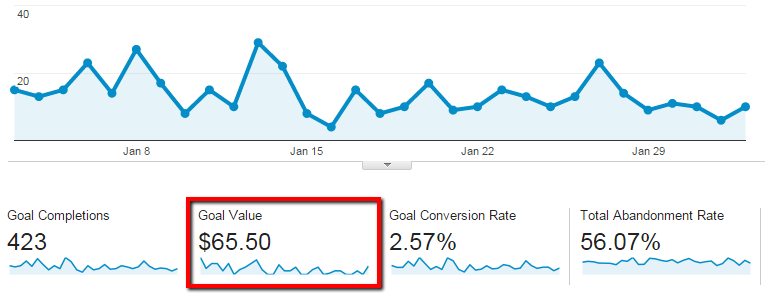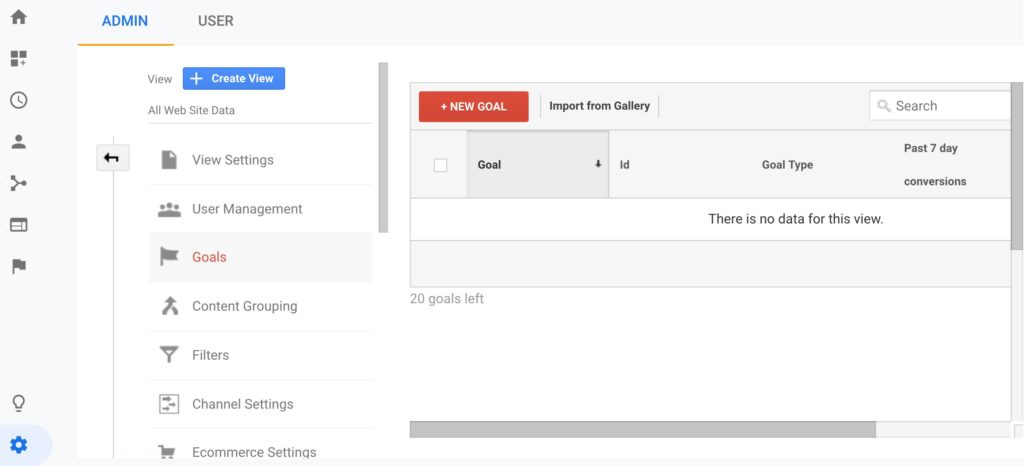What Data Is Google Analytics Goals Unable to Track: A Complete Overview
What Data Is Google Analytics Goals Unable to Track: A Complete Overview
Blog Article
Discover the Limitations of Google Analytics Goals: Introducing the Data Types That Remain Untrackable
As services significantly rely on data-driven decision-making, understanding the constraints of devices like Google Analytics becomes vital. While Google Analytics Goals deal useful insights right into customer communications, there exist information types that thwart monitoring, posing obstacles to an extensive understanding of individual habits.
Incomplete Individual Trip Tracking
Insufficient customer trip monitoring within Google Analytics can prevent the capacity to properly analyze user behavior. When the individual trip is not totally tracked, there are voids in the data that protect against an extensive understanding of how individuals communicate with an internet site. This absence of understanding can bring about missed chances for optimization and improvements to the customer experience.
One usual problem with incomplete individual journey monitoring is the lack of ability to see the complete path that individuals take previously completing a goal or leaving the site. Without this info, it is challenging to determine where individuals may be encountering obstacles or rubbing points that prevent them from transforming. Additionally, incomplete monitoring can cover the impact of certain marketing initiatives or site adjustments on customer habits.
To resolve this limitation, it is important to establish proper tracking systems within Google Analytics to capture the whole customer journey. This might include establishing event monitoring, goal funnels, or utilizing tools like Google Tag Supervisor to ensure that no crucial interactions go unrecorded. By acquiring a comprehensive view of the user trip, site proprietors can make more informed choices to enhance customer interaction and drive conversions.
Attribution Obstacles
Navigating through acknowledgment obstacles in Google Analytics needs a thorough understanding of how different touchpoints add to the total conversion procedure. Attribution difficulties develop from the intricacy of modern customer journeys, where users connect with multiple networks prior to transforming.
One common acknowledgment difficulty is the problem in associating conversions to the correct resource, particularly in cases where customers interact with numerous channels before transforming. Furthermore, cross-device monitoring presents another acknowledgment challenge, as users often switch over between tools throughout their trip, making it testing to track their interactions perfectly.
Offline Conversions
Given the challenges related to attributing conversions accurately in online networks, the measurement of offline conversions provides a considerable opportunity for marketers looking for a much more thorough understanding of their customers' trip. Offline conversions refer to activities that customers take in the physical world, such as making purchases in brick-and-mortar stores or over the phone, going to events, or involving with printed materials - what data is google analytics goals unable to track. These conversions are essential for organizations that anchor operate both online and offline, as they supply beneficial understandings right into the effectiveness of advertising campaigns across numerous touchpoints
Tracking offline conversions traditionally positioned a substantial challenge for marketing professionals, as it was testing to connect these activities back to details on-line communications properly. With improvements in modern technology, such as the combination of CRM systems, one-of-a-kind identifiers, and promo code codes, organizations can currently connect the gap in between online and offline information to acquire a much more alternative view of consumer actions. By properly gauging offline conversions, marketers can enhance their techniques, assign sources more effectively, and eventually enhance the overall customer experience.
Cross-Device Tracking
Cross-device monitoring plays a critical function in recognizing the interconnected nature of customers' electronic interactions across numerous tools. In today's omnichannel world, where customers effortlessly switch between tablets, smartphones, and desktops, tracking their behavior across these devices is necessary for online marketers to gain a detailed sight of their customer trip.

Furthermore, personal privacy problems and laws such as GDPR and CCPA have better complicated cross-device tracking. With individuals demanding even more control over their information and boosted this restrictions on tracking innovations, marketing experts must discover ingenious and privacy-compliant means to attach user interactions throughout devices.
Dynamic Material Interaction
Understanding individual involvement with vibrant web content is crucial in maximizing electronic advertising methods for improved target market interaction. Dynamic material refers to website aspects that change based upon individual behavior, choices, or various other factors, offering a tailored experience. Nonetheless, tracking customer interactions with dynamic content poses obstacles for typical analytics devices like Google Analytics.
While Google Analytics can track basic interactions like clicks and page sights, it may battle to record even more nuanced engagements within vibrant content. what data is google analytics goals unable to track. Metrics such as time invested in details dynamic elements, hover actions, or communications within pop-ups are usually not quickly measurable making use of common tracking methods. This constraint hinders marketers' ability to totally comprehend exactly how customers are involving with dynamic material and customize their strategies as necessary

Verdict
Finally, Google Analytics goals have restrictions in tracking insufficient customer journeys, attributing conversions accurately, recording offline conversions, tracking cross-device communications, and measuring vibrant material interaction. These constraints highlight the significance of exploring added monitoring techniques and devices to obtain a more comprehensive understanding of individual habits and conversions past what Google Analytics can supply.
While Google Analytics Goals deal useful insights into customer communications, there exist data types that elude tracking, posturing obstacles to an extensive understanding of user behavior.Insufficient customer trip tracking within Google Analytics can hinder the capability to properly assess customer habits. When the customer trip is not completely tracked, there are voids in the information that stop a thorough understanding of just how users interact with a website.One usual issue with incomplete customer journey tracking is the failure to see the complete course that individuals take before finishing an objective or leaving the website. By acquiring a comprehensive view of the user journey, internet site owners can make even more educated decisions to boost individual involvement and drive these details conversions.
Report this page